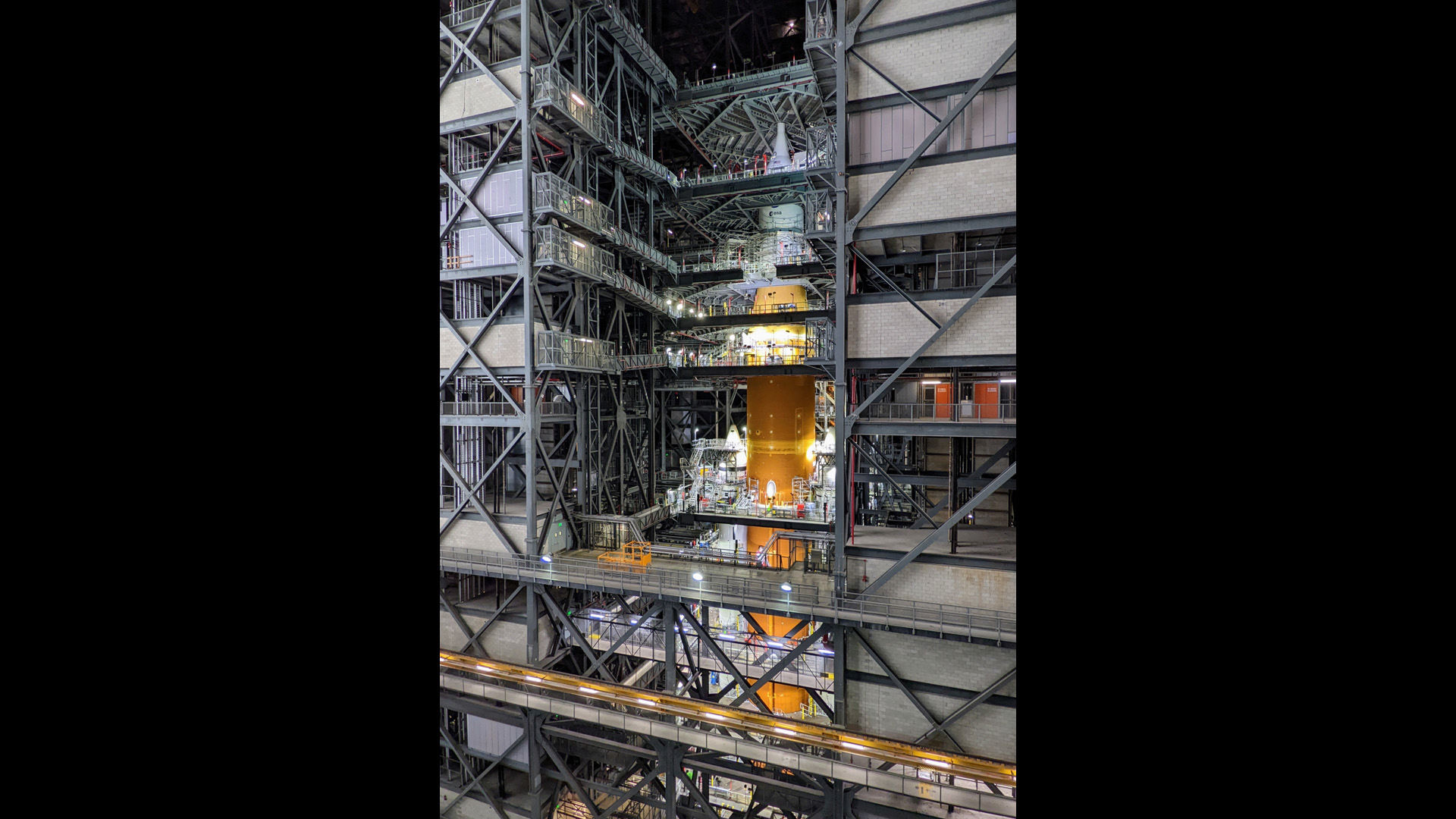NASA successfully retests Artemis 1 moon rocket core stage engines after fault

All core stage rocket engines on NASA's moon rocket performed as expected in a recent series of tests that followed a replacement of a faulty control mechanism in one of those engines, the agency said.
A faulty controller on the RS-25 engine number 4 forced the space agency to delay its upcoming uncrewed moon mission, Artemis I, which will mark the beginning of humanity's return to the moon.
The RS-25 engines, manufactured by Aerojet Rocketdyne, are a legacy technology from the space shuttle era. There are four RS-25 engines powering the core stage of the Space Launch System (SLS) moon rocket.
During the latest power up of the Artemis I SLS core stage, performed by NASA in cooperation with the engine-maker earlier this month, all four engine controllers performed as expected.
These engine controllers communicate with the rest of the rocket, providing precision control and internal health diagnostics.
The fault in the engine four controller was caused by a faulty memory chip, which is used during the controller start-up sequence and has no impact on controller operations beyond that point, NASA said in a statement.
Breaking space news, the latest updates on rocket launches, skywatching events and more!
Engineers found no indication of faulty memory chips on the other three engines, and therefore no related constraints to the wet dress rehearsal test that needs to be performed ahead of the launch, NASA added.
The fault, however, forced NASA to postpone the Artemis I launch to no earlier than April.
Teams at Kennedy Space Center in Florida are now completing pre-flight diagnostic tests, including testing the flight termination system and instaling instrumentation on the twin solid rocket boosters.
The rocket is expected to be rolled out to Launch Pad 39B in March for the wet dress rehearsal test, during which the teams will fuel the rocket and run through the pre-launch sequence all the way to the countdown.
The wet dress rehearsal test is designed to verify the performance of the SLS rocket, the Orion space capsule and the ground systems at Kennedy. NASA will only set a launch date for the Artemis I mission following the wet dress rehearsal.
Follow Tereza Pultarova on Twitter @TerezaPultarova. Follow us on Twitter @Spacedotcom and on Facebook.

Tereza is a London-based science and technology journalist, aspiring fiction writer and amateur gymnast. She worked as a reporter at the Engineering and Technology magazine, freelanced for a range of publications including Live Science, Space.com, Professional Engineering, Via Satellite and Space News and served as a maternity cover science editor at the European Space Agency.
